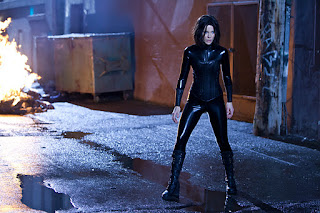3D FOR “BEAUTY AND THE BEAST” BREAKS NEW GROUND
Press release
Through the magic of Disney and the leaps in modern computer animation technology developed at the Walt Disney Animation Studios, a team of artists, under the guidance of stereographer Robert Neuman, found a way to breathe more dimensional life into “Beauty and the Beast” by turning it into an eye-popping 3D experience.
 |
| Photo courtesy of Walt Disney Pictures |
Numerous and dramatic challenges awaited Neuman and his team. In discussing the complications of making “Beauty and the Beast” into a 3D film, Neuman emphasizes that because there was no dimensional reality in which to put a second camera, he and his team had to invent a brand new set of computer tools that would allow the filmmakers to sculpt depth into the existing images and thereby create a second eye in order for the 3D to be achieved.
“In making a live-action film a director could simply add a second camera to get the second eye view,” Neuman says of the task that he and his team faced. He explains that the 3D conversion technique they came up with––pixel displacement––enables the artists to take each image and create a “depth map” that corresponds to that image. “The depth map is simply a grayscale image that allows our artists to sculpt out a relief map––the depth map––of the image. We’re then able to take that, apply it to the original image and displace the pixels to create a second eye view,” he says.
Producer Don Hahn adds, “I think we were the beneficiaries of having the original movie made on the CAPS system, which was the Computer Animation Production System that Disney created to produce animated movies back in the late ‘80s. We were able to store the movie on individual levels. In other words, if we had a scene of Belle and the Beast together at a table in the castle, we would have the characters on one level, and the table on another level, and the background on still another level. So we had a nice separation when we brought the scenes back online.”
The computer gives the filmmakers total control over that illusion. Objects that are close up, such as Belle and the Beast dancing, can create a very intimate environment, as though the audience is sitting right there in the scene. Or if a spectacular shot is required, perhaps of the countryside with Maurice going off to sell his inventions, that epic shot is given a more gentle treatment of 3D. Many factors are at play and the story is enhanced by that 3D decision-making. Stereographers like Robert are crucial to the process.
Take for example the famous ballroom sequence. Although spectacular in its original form, Neuman and his team of artists were able to enhance what was already one of animation’s most memorable scenes. “We use 3D to support the storytelling narrative,” Neuman says. “Like any other aspect of film, such as the music score, 3D is used to enhance big emotional moments and to help build up to the emotional climax. For those big moments we expand the 3D. We put more of the three-dimensional effects into it. For the ballroom scene it was vital to have the right sense of scale. We had to show the grandeur, the majesty of this ballroom. The key to it was to enforce the sense of perception of scale.”
Neuman further explains that the “Be Our Guest” number was especially suited to 3D. “Although it was a bigger challenge than the ballroom sequence because there were shots that had hundreds of levels and every level of artwork requires dimensionalizing, if you look at the original staging, the way the things are blocked and choreographed, you see that it already has a sense of dimensionality.”
The filmmakers agree that the techniques that enabled them to create “Beauty and the Beast” in 3D is so new that this could not have been done just five years ago. “The first time we ever did a dimensionalization was on ‘The Nightmare Before Christmas,’” Don Hahn says. “It was hard, very labor-intensive work. The results however were great, but it took a long time and was very expensive. It still takes a long time and it’s very expensive!” Hahn says.
“Beauty and the Beast” was the first hand-drawn film to be dimensionalized into 3D. Disney is the leader in the new technology and regardless of how sophisticated it is, as Hahn says, “It’s important for people to know that it’s not as simple as pushing a button or putting a quarter in a machine and a 3D movies out. It’s all about great artists like Robert Neuman and his crew who must make important creative decisions.”


Comments
Post a Comment